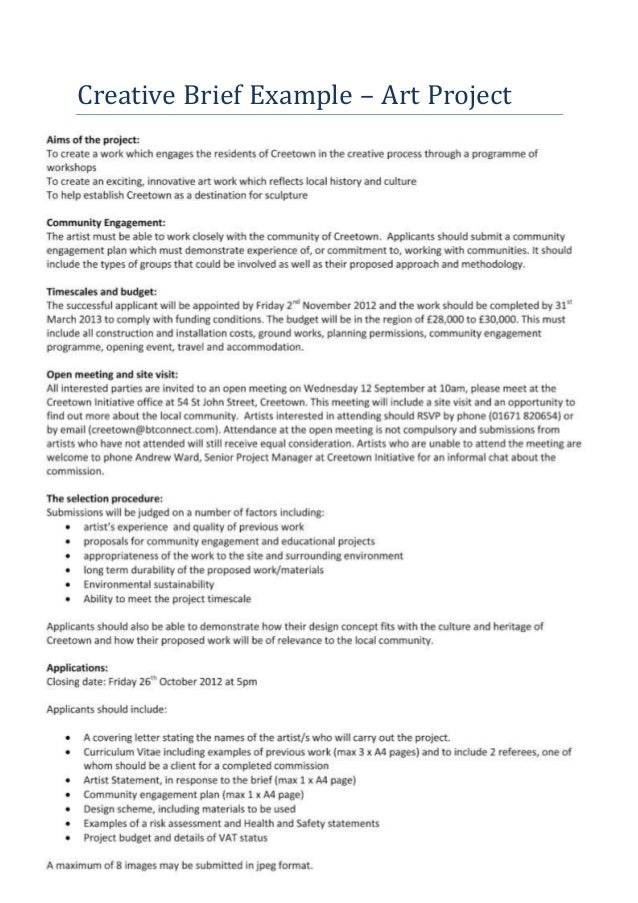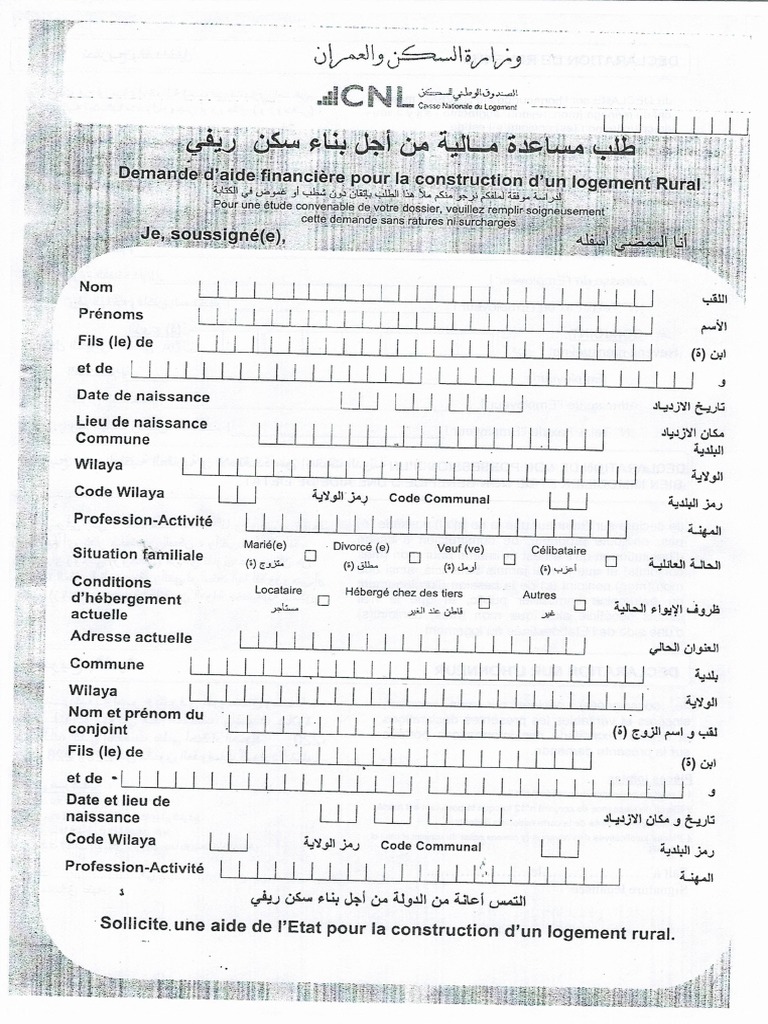Mastering The Art Of The Brief: From Concept To Completion

Table of Contents
Understanding the Purpose of a Brief
Before you even begin writing, you must clearly define the objective of your brief. What specific outcome are you hoping to achieve? This clarity is fundamental to a successful project. Consider these key questions:
- What needs to be achieved? Define measurable goals. For example, instead of "increase brand awareness," aim for "increase website traffic by 20% in three months."
- Identify the target audience. Who is this brief for? Understanding their needs and expectations is paramount. A marketing brief targeting millennials will differ significantly from one targeting senior citizens. Consider demographics, psychographics, and their existing relationship with your brand or product.
- Establish the scope of the project. What are the boundaries and limitations? Clearly defining the scope prevents scope creep and keeps the project focused. This is especially important for project briefs and creative briefs.
Here are some examples of how the purpose is defined in different types of briefs:
- Marketing Brief: Outlines specific campaign goals, target audience segmentation, key performance indicators (KPIs), budget allocation, and desired media channels.
- Design Brief: Specifies design parameters, including branding guidelines, style guides, target audience preferences, and desired functionality.
- Software Development Brief: Details the desired functionality, technical specifications, platform compatibility, security requirements, and project timelines.
Structuring Your Brief for Clarity and Impact
A well-structured brief is easy to understand and follow. Here are the essential components and best practices for concise and effective writing.
The Essential Components of a Winning Brief
- Project Overview: A concise summary providing the project's context, goals, and objectives. Think of this as the elevator pitch for your project.
- Target Audience: A detailed description of your intended audience, including demographics (age, gender, location), psychographics (lifestyle, values, interests), and their needs and pain points.
- Key Messages: The core messages to be communicated or the key functionalities to be developed. These should be clear, concise, and memorable.
- Timeline & Deliverables: Set clear deadlines and expectations for each stage of the project. This keeps everyone on track and avoids confusion.
- Budget & Resources: Outline the available budget and resources to manage expectations and prevent overspending.
- Success Metrics: Define how the success of the project will be measured. Use Key Performance Indicators (KPIs) to track progress and evaluate results. This is vital for marketing brief effectiveness.
- Appendix (Optional): Include supporting documents like market research, competitor analysis, or relevant case studies.
Best Practices for Concise and Effective Writing
- Use clear and concise language, avoiding jargon and technical terms that your audience may not understand.
- Employ bullet points, headings, and visuals (charts, graphs, images) to enhance readability and make the information easily digestible.
- Prioritize key information. Avoid unnecessary details; focus on what's essential for the project's success.
- Ensure consistency in tone and style throughout the brief. Maintain a professional and consistent voice.
- Proofread carefully! Errors in grammar and spelling undermine credibility.
Gathering and Utilizing Relevant Information
A strong brief is built on a solid foundation of research. Thorough preparation ensures that all stakeholders are on the same page.
- Conduct thorough research: Gather data relevant to your project. This could include market research reports, competitor analysis, customer surveys, and internal feedback.
- Use data and analytics: Support your claims and decisions with data. Data-driven decision-making results in more effective brief writing.
- Consult with stakeholders: Gather input and perspectives from all relevant parties—clients, team members, subject matter experts—to ensure a comprehensive understanding of the project's requirements.
- Employ effective communication strategies: Use clear and concise communication methods to gather information and address any questions or concerns.
Examples of relevant information include:
- Market research reports detailing consumer trends and preferences.
- Competitor analysis highlighting strengths, weaknesses, and market positioning.
- Customer surveys providing valuable feedback and insights.
- Internal feedback sessions to gather input from team members and stakeholders.
Reviewing and Refining Your Brief
Before finalizing your brief, obtain feedback from relevant stakeholders. Collaboration ensures that everyone understands the project's goals and expectations.
- Obtain feedback: Share your draft brief with stakeholders and solicit their feedback.
- Incorporate feedback: Review the feedback carefully and make necessary revisions to improve the brief's clarity and completeness.
- Ensure easy understanding: The brief should be easily understood by all parties involved, regardless of their technical expertise.
- Use a collaborative platform: Employ project management software or collaborative tools to facilitate feedback and revision processes effectively.
- Maintain a version history: Track changes made to the brief to ensure transparency and accountability.
Conclusion
Mastering the art of writing effective briefs is a crucial skill for anyone involved in project management and creative work. By following these steps—understanding the purpose, structuring clearly, gathering relevant information, and reviewing thoroughly—you can ensure your briefs are concise, impactful, and lead to the successful completion of your projects. Download our free brief template (link here) to help you create your own winning client brief, project brief, or marketing brief today! Start crafting more effective briefs and experience the benefits of clear communication and project success. Improve your brief writing skills and watch your project success rates soar!

Featured Posts
-
 Nba Legend Walt Frazier And Todays Dylan Dreyer A Ringside Encounter
May 23, 2025
Nba Legend Walt Frazier And Todays Dylan Dreyer A Ringside Encounter
May 23, 2025 -
 The Whos Roger Daltrey Battles Potential Deafness And Blindness
May 23, 2025
The Whos Roger Daltrey Battles Potential Deafness And Blindness
May 23, 2025 -
 Eiskalt Ueberrascht Der Beliebteste Eisgeschmack In Essen Und Nrw
May 23, 2025
Eiskalt Ueberrascht Der Beliebteste Eisgeschmack In Essen Und Nrw
May 23, 2025 -
 Mutlq Alnar Fy Washntn Rsalt Mn Ajl Flstyn
May 23, 2025
Mutlq Alnar Fy Washntn Rsalt Mn Ajl Flstyn
May 23, 2025 -
 Caesar Flickerman Found Kieran Culkin Joins Sunrise On The Reaping Cast
May 23, 2025
Caesar Flickerman Found Kieran Culkin Joins Sunrise On The Reaping Cast
May 23, 2025
